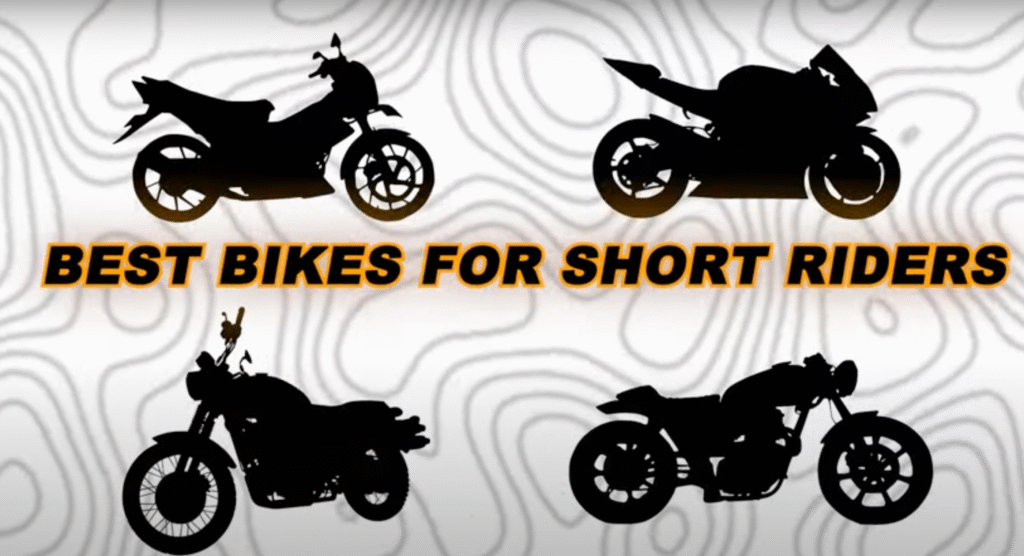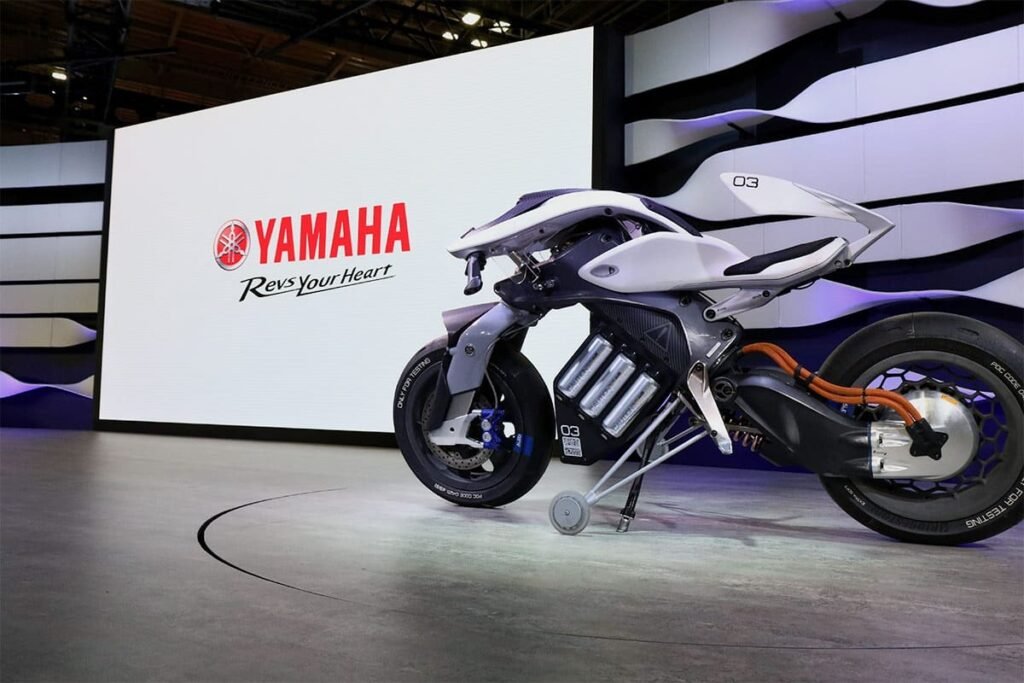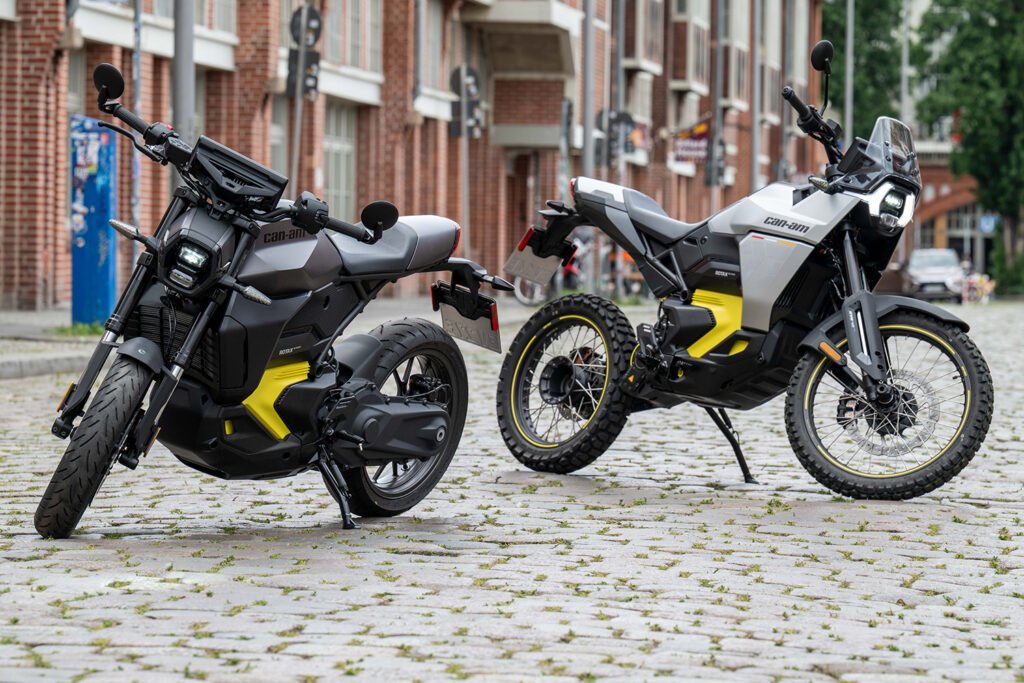Table of Contents
Finding a bike that truly fits builds confidence from day one. If you’re short rider 5’6″ (168 cm) or under—or you simply want easier reach to the ground—use this fit-first guide for practical setup tips and a curated list of short-rider-friendly motorcycles that stay stylish and fully functional.
Choosing a Bike: Fit Comes First
What matters most for short rider
- Seat height (unladen & laden) + sag: Brochure numbers don’t tell the whole story—how much the suspension compresses with you on it is just as important as stated height.
- Seat narrowness: A slimmer seat lets your legs drop straighter, often helping more than a 0.5–1.0″ height change.
- Weight & balance: A low center of gravity (COG) and centralized mass feel lighter at parking-lot speeds.
- Reach to controls: Closer bars, adjustable levers, and sensible peg position reduce overreach.
Simple fit upgrades
- Low/comfort seats: Many OEMs offer low seats; foam trim or gel options can net ~0.5–1.0″.
- Quality lowering links / “Low” kits: Use reputable parts; re-spring/re-valve if needed to preserve handling and clearance.
- Boots with thicker soles: A discreet +0.5–1.0″ boost—no bike mods required.
- Bar risers & short-reach levers: Bring controls to you; reduce arm and finger stretch.
Riding techniques that help
- One-foot stop: Left foot down, right foot on the rear brake—more stable than tip-toeing both feet.
- Stop upright first: Then lean slightly to one side as you put a foot down.
- Park smart: Avoid downhill, nose-in parking that requires an uphill backward push.
Best Choices by Category
Below are approachable models with low or slim seats and balanced ergonomics for short rider. (Seat heights are approximate and vary by year/options.)
Cruisers & “Modern Classic” Standards
Low seats + low COG = instant confidence.
- Honda Rebel 300/500 — ~27.2″
Light, narrow, unintimidating; the 500 adds highway oomph without drama. - Honda Rebel 1100 / 1100T (DCT optional) — ~27.5″
Low, torquey; optional automatic DCT is brilliant in traffic and on hills. - Kawasaki Vulcan S (ERGO-FIT) — ~27.8″
Rare factory-adjustable cockpit (bars/pegs/seat) to match your body. - Indian Scout / Scout Bobber — ~25.6–26.5″
Ultra-low seat; practice the one-foot stop for best control. - Moto Guzzi V7 — ~30.7″
Classic style, narrow midsection; shaft drive lowers maintenance. - Royal Enfield Meteor 350 / Classic 350 — ~30–31.7″
Friendly weight and power; excellent for city and new riders.
Middleweight Standards / Naked Bikes
A bit taller on paper, but slim waists make flat-footing easier for short rider.
- Suzuki SV650 — ~30.9″
Slim seat, neutral balance; a proven platform for all levels. - Kawasaki Z650 — ~31.1″
Narrow, light, smooth fueling; great first middleweight. - Honda CB500F / CBR500R — ~30.7–31.1″
Balanced, forgiving, with composure beyond “beginner.” - Yamaha MT-07 — ~31.7″
Torquey, playful, still approachable thanks to a narrow midsection. - Ducati Scrambler (Icon/Full Throttle) — ~31.4″ (low seat ~30.3″)
Low-seat kit transforms reach; light, friendly torque.
Adventure & Sport-Touring (Low/Adjustable)
Tall by nature—these models buck the trend with true Low options or helpful geometry.
- Triumph Tiger 900 GT Low — ~29.9–31.3″ (adjustable)
Purpose-built Low chassis, not just a short seat; keeps clearance and confidence. - BMW F 750 GS (low suspension & low seat) — ~30–31″
Multiple factory-low setups; very manageable COG. - Ducati Multistrada V2 / V2 S (low seat kit) — ~31.1″ (down to ~30.3″)
Sport-touring feel with realistic reach once lowered. - Honda NT1100 (market dependent) — ~32.3″
Narrow, relaxed, DCT available; low-seat options in some regions.
Tip: Even if you can’t flat-foot an ADV, a narrower seat + one-foot stop can make midsize tourers very workable.
Lightweight & Entry Sport
Smaller chassis + narrow seats = easy confidence at stops.
- BMW G 310 R — ~30.9″ (optional low seats)
Light, neutral; an excellent urban commuter. - KTM 390 Duke — ~32.3″ (very narrow)
Feels smaller than the number; super light and playful. - Honda CB300R — ~31.5″
Featherweight and unintimidating; a great first “proper” bike. - Yamaha R3 — ~30.7″
Sporty look without the height penalty; narrow seat helps.
Electric (Low COG, Smooth Delivery)
Heavier overall, but batteries sit low—great balance at walking pace.
- LiveWire S2 Del Mar — ~31″
Narrow, nimble; instant torque with approachable chassis feel. - Zero S / FXE — ~31–32″
Slim midsections, smooth control; seat options available. - Energica EsseEsse9 — ~31.1″
Heavier yet balanced; consider lower seat foam for reach.
Comparison Shortlist (Seat Height & Why It Works)
| Bike (Category) | Seat Height* | Why It’s Short-Rider Friendly |
|---|---|---|
| Honda Rebel 500 (Cruiser) | ~27.2″ | Low, narrow, super manageable on day one |
| Kawasaki Vulcan S (Cruiser) | ~27.8″ | ERGO-FIT cockpit adjusts to your body |
| Indian Scout (Cruiser) | ~25.6″ | Ultra-low seat; one-foot stop technique shines |
| Suzuki SV650 (Standard) | ~30.9″ | Slim waist, neutral balance, proven platform |
| Ducati Scrambler (low seat) | ~30.3″ | Low seat transforms reach; light, torquey twin |
| Triumph Tiger 900 GT Low (ADV) | ~29.9–31.3″ | True factory-low chassis—rare in the ADV class |
| BMW F 750 GS (low) (ADV) | ~30–31″ | Multiple factory-low options; excellent balance |
| KTM 390 Duke (Naked) | ~32.3″ | Feels lower thanks to a very narrow waist |
| Yamaha R3 (Sport) | ~30.7″ | Sport look, easy reach, lightweight |
| LiveWire S2 Del Mar (EV) | ~31″ | Low COG + narrow feel; smooth, linear power |
*Approximate; always sit on the exact bike you’ll buy.
Smart Setup: Make Any Bike Fit Better
- Sit test, not spec test: Numbers don’t reveal seat width, sag, or COG. Try it in your riding boots.
- Try the low seat first: Often the fastest, cleanest win.
- Adjust controls: Roll bars back slightly; bring levers closer; use short-reach levers.
- Mind the suspension: If lowering with links, have a shop re-spring/re-valve and raise fork tubes to match.
- Boot boost: +10–20 mm soles can turn tippy-toe into confident footing.
- Practice one-foot stops: Build the habit in an empty lot until it’s automatic.
What not to do (usually)
- Over-lower the suspension—kills clearance, ruins ride, causes top-out.
- Super-wide plush seats—comfy but widen your stance and hurt reach.
- High-mounted top boxes—put weight lower (soft bags) to preserve balance.
Sample Short-Rider “Fit Paths”
City & Weekend Fun for short rider
- Start: Rebel 500 / SV650 / Scrambler (low seat)
- Fit: Low seat → lever reach adjusters → boots with +10 mm sole.
Midsize Touring / Light ADV for short rider
- Start: Tiger 900 GT Low / F 750 GS (low)
- Fit: Low seat → bar risers → one-foot stops → pack luggage low/forward.
First Sporty Bike for short rider
- Start: R3 / CB300R / 390 Duke
- Fit: Short-reach levers → adjust bar roll → consider thicker insoles.
Electric Commuter/Weekend for short rider
- Start: S2 Del Mar / Zero S/FXE
- Fit: Low seat option → lever reach → slow-speed balance practice.
Bottom Line
Short riders don’t have to “make do.” The right low or narrow seat, balanced weight, and a few cockpit tweaks open up cruisers, nakeds—even ADVs. Choose the bike that feels balanced the moment you sit on it, then fine-tune with seat, controls, and (if needed) a pro suspension setup.
Pick the machine that makes you feel calm at a stop and confident at 5 mph—once those boxes are checked, the rest of the ride takes care of itself.




